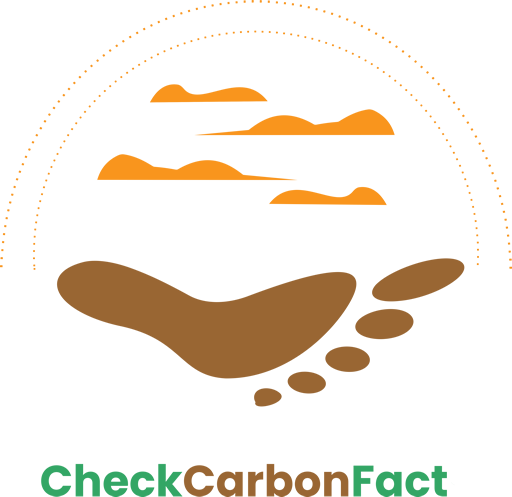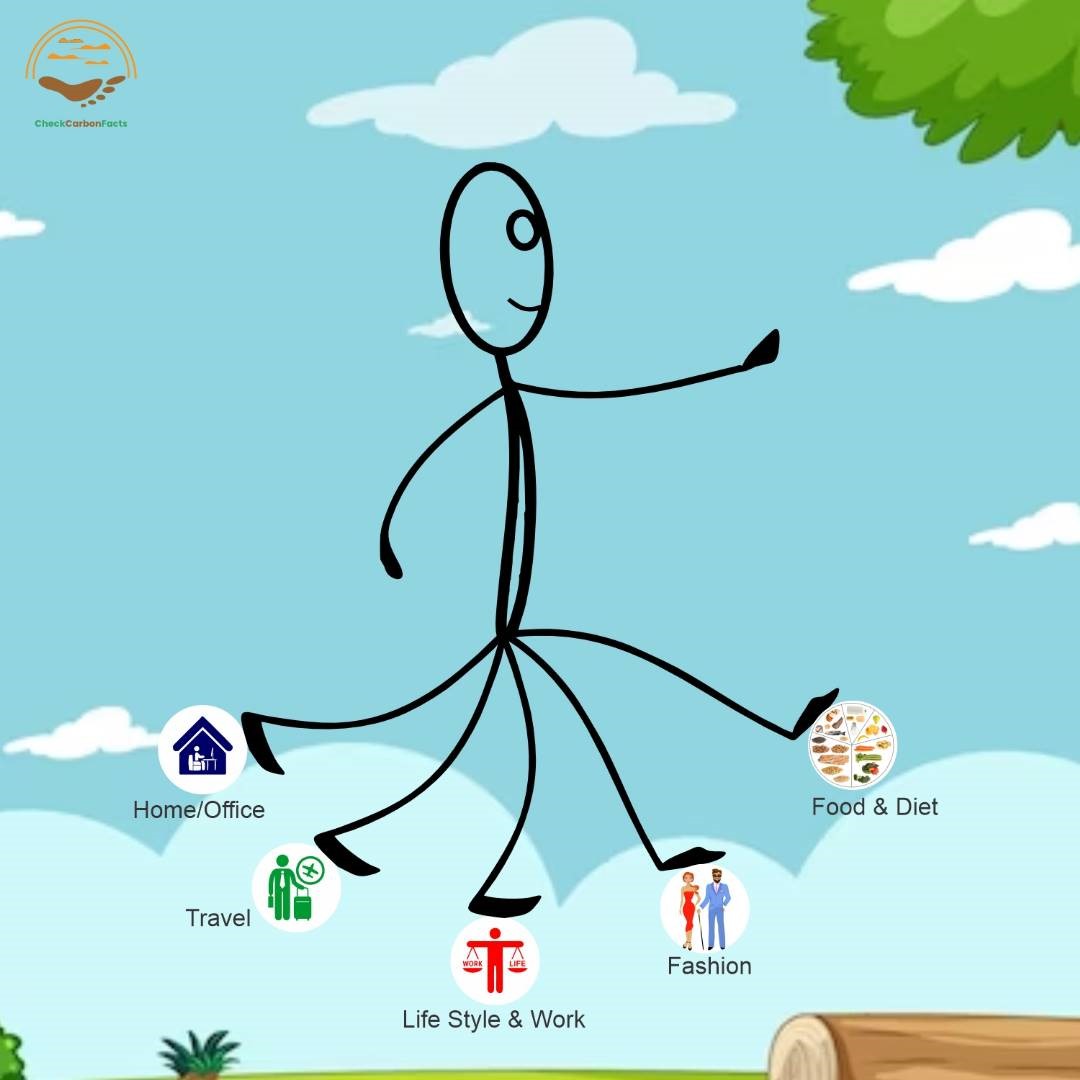Climate change is undoubtedly one of the most pressing challenges of our time. The phenomenon has far-reaching consequences on every aspect of our lives. Life and living on planet Earth now face an existential threat. Everyone must know about this and take action to avert a looming catastrophe.
Free-riding leads to nowhere…
Everyone including government, companies, and citizens have different roles to play in raising awareness and practicing mitigation and adaptation strategies. The government has its role quite clearly cut out – to make and drive policies that align with the science of climate change. Companies, including multi-nationals, medium and small-scale enterprises have a duty to cut carbon emissions from their operations and/or associated with their supply chains. Citizens of the earth have the greatest responsibility in curbing this challenge. This is what a holistic response is about; and without it, disjointed efforts will amount to no more than free-riding.
Carbon footprint is the first step…
How can individual citizens discharge their responsibilities? What, in the first place, are those responsibilities? A place to begin the awareness is to have an understanding of the concept of carbon footprint. According to the UK Department for Environment Food & Rural Affairs carbon footprint, also referred to as “consumption emissions’ to distinguish them from estimates relating to the emissions ‘produced’ within a country’s territory or economic sphere, are “emissions that are associated with the consumption spending of UK/England residents on goods and services, wherever in the world these emissions arise along the supply chain and those which are directly generated by UK/English households through private motoring and burning fuel to heat homes.” In more generic terms, carbon footprints pertain to greenhouse gas (GHG) emissions, primarily carbon dioxide, that originate both directly and indirectly from an individual, organization, event, or product. The calculation involves adding up the emissions produced at every stage of a product or service’s existence, which includes material production, manufacturing, usage, and disposal. Before taking measures to cut emissions as individuals, it is essential to understand the size and scale of one’s carbon footprint.
Useful footprint resources…
Several online calculators are available that allow individuals to estimate their carbon emissions based on factors such as energy consumption, transportation habits, diet, and lifestyle choices. These calculations offer insights into which areas of your life contribute the most to carbon emissions, enabling you to focus on the most impactful changes. Examples include: Greenly’s carbon calculator, CoolClimate Calculator by the University of California, UK-based CarbonFootprint.com, the Greenhouse Gas Protocol established by the World Resources Institute, and the UN Carbon Footprint Calculator. Having known where to go to get a sense of our emissions, let us now take a close look at the five toes of carbon footprint.
Toe One: Food and dieting…
Findings point to the fact that food production is responsible for approximately 25% of all greenhouse gas emissions, contributing significantly to global warming. Livestock rearing, for instance, contributes to global warming through the methane gas produced by the animals, as well as through deforestation to create more grazing areas. The impact of climate change on food availability has been well documented but it’s important to note that food production itself is not the only culprit. What and how humans eat is a major factor. In other words, our diets and dieting habits constitute one of the toes of the foot. A Cambridge study on greenhouse gas emissions of UK diets revealed that meat and dairy products were the largest contributors of dietary sources of greenhouse gas emissions (GHGE), with beef dishes accounting for 9% among adults and chicken dishes accounting for 6% in children (under 18 years old). Also, the impact of beef dishes on GHGE increased with age and showed a similar contribution between males and females, both at 8%. What this means is that one of the most effective ways to reduce an individual’s environmental impact (carbon footprint) is by avoiding/reducing the consumption of meat and dairy products.

Source: BBC
Toe Two: Commuting and Transportation
The transportation industry plays a significant role in greenhouse gas emissions, making up around 20% of all global carbon dioxide emissions. Among the various transportation modes, road transportation is responsible for the majority of these emissions. Therefore, dependence on vehicles powered by fossil fuels, such as automobiles results in the emission of greenhouse gases into the atmosphere, which in turn contributes to climate change. Individuals can, alternatively, choose more green-friendly modes of transportation and commuting options for themselves. Two options readily stand out, viz:
- Carpooling and Public Transportation: Sharing a car with coworkers, friends, or neighbors can dramatically cut the number of cars on the road, resulting in fewer emissions produced by each individual. Likewise, utilizing public transportation as opposed to always using one’s car.
- Walking and Cycling: Opting for more physically demanding modes of transportation, such as walking or cycling for shorter distances, not only helps cut down on carbon emissions but also has health benefits. Studies show for every added 30 minutes spent in a vehicle per day, an individual risks 3% chance of becoming obese. Investing in infrastructure that is hospitable to pedestrians and cyclists alike can make these modes of transportation less dangerous and more easily accessible.
Toe Three: Shelter and housing…
Households are accountable for nearly three-quarters of global carbon emissions. As such, individuals must be willing to make necessary adaptations to their housing and shelter needs. There are two basic categories of household carbon footprint; direct emissions related to energy use in the home and due to burning personal transportation fuels; and indirect emissions, such as those that arise during the manufacture of those climate unfriendly appliances. Therefore, housing is a crucial aspect of an individual’s carbon footprint. Making homes more energy-efficient can have a positive impact on reducing greenhouse gas emissions. Some domestic habits individuals can imbibe include;
- Using Insulating and Energy-Efficient Appliances: Properly insulating homes and investing in energy-efficient appliances can lead to reduced energy consumption for heating, cooling, and electricity usage.
- Renewable Energy Sources: Embracing renewable energy sources, such as solar panels, for household electricity offers numerous benefits and plays a pivotal role in promoting sustainability and combating climate change. Added advantages include access to a clean and renewable source of power, self-sufficiency, less reliance on the traditional power grid, and wise long-term financial decisions, etc.
- Sustainable Building Materials: When building or renovating homes, using sustainable and eco-friendly materials can contribute to lower carbon emissions and less environmental impact. Examples of eco-friendly building materials include steel.
Toe Four: Lifestyle and work
An important factor in minimizing an individual’s carbon footprint is the adoption of a conscientious lifestyle that places a priority on minimizing waste and embraces the “reduce, reuse, and recycle” tenets. The following practices are helpful:
- Minimize Single-Use Items: Plastic pollution is a significant problem for the ecosystem, and it poses a particularly grave risk to marine life. One way for individuals to take action against this problem is by lowering the amount of single-use plastics that they use. Instead, you should use reusable options such as bags, bottles, and containers. Individuals can assist in lessening the burden of plastic trash and contribute to cleaner oceans and a healthier environment by making deliberate choices to reduce the amount of garbage produced by plastic
- Office and Workplace Sustainability: Individuals have the potential to advocate for environmentally friendly practices in the workplace. These practices can include the implementation of recycling programmes, the reduction of paper usage through digitalization, and the encouragement of energy-saving measures.
Toe Five: Fashion and clothing
The textile and apparel sector is one of the most significant polluters of the natural environment and producers of carbon emissions. They account for an estimated 8-10% of global carbon emissions, exceeding the combined emissions of both the aviation and shipping industries. Making sustainable fashion choices is, therefore, one of the most effective ways for an individual to cut down on their overall carbon footprint in this sector. Some emission-cutting fashion/lifestyle ideas are:
- Buying from ethical and Eco-Friendly brands that place priority on sustainable sourcing, fair labour practices, and environmentally conscious production methods.
- Shopping at Second-Hand Stores and Thrifting: Adopting the practice of shopping at second-hand stores not only helps to spread awareness about sustainable fashion but also reduces the demand for the manufacturing of new clothing, which will have a massive impact on your carbon footprint.
- Purchasing quality and durable clothing to reduce the need for frequent replacements and the overall demand for the production of new clothing.
Found it interesting and would like more in the mail?




